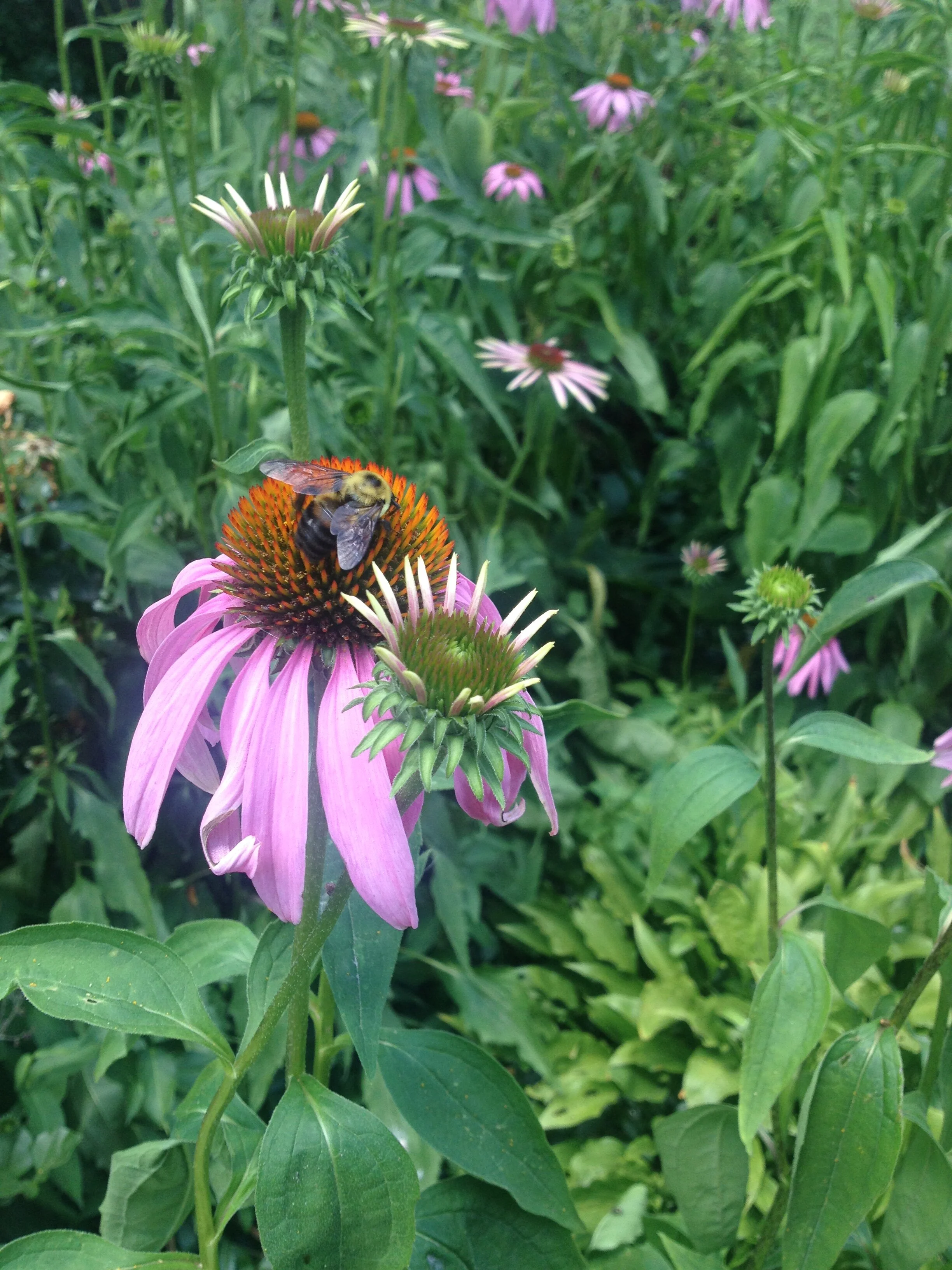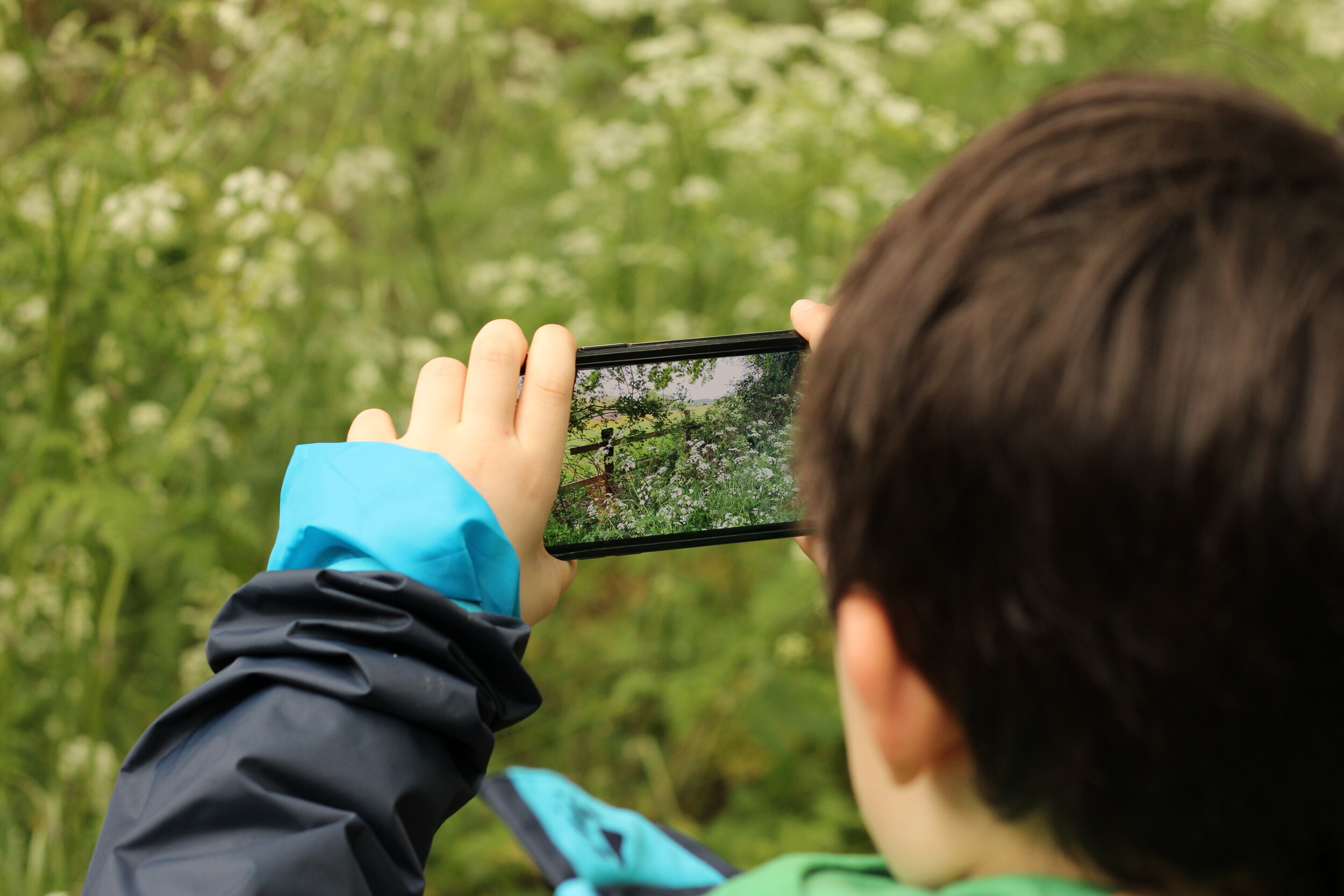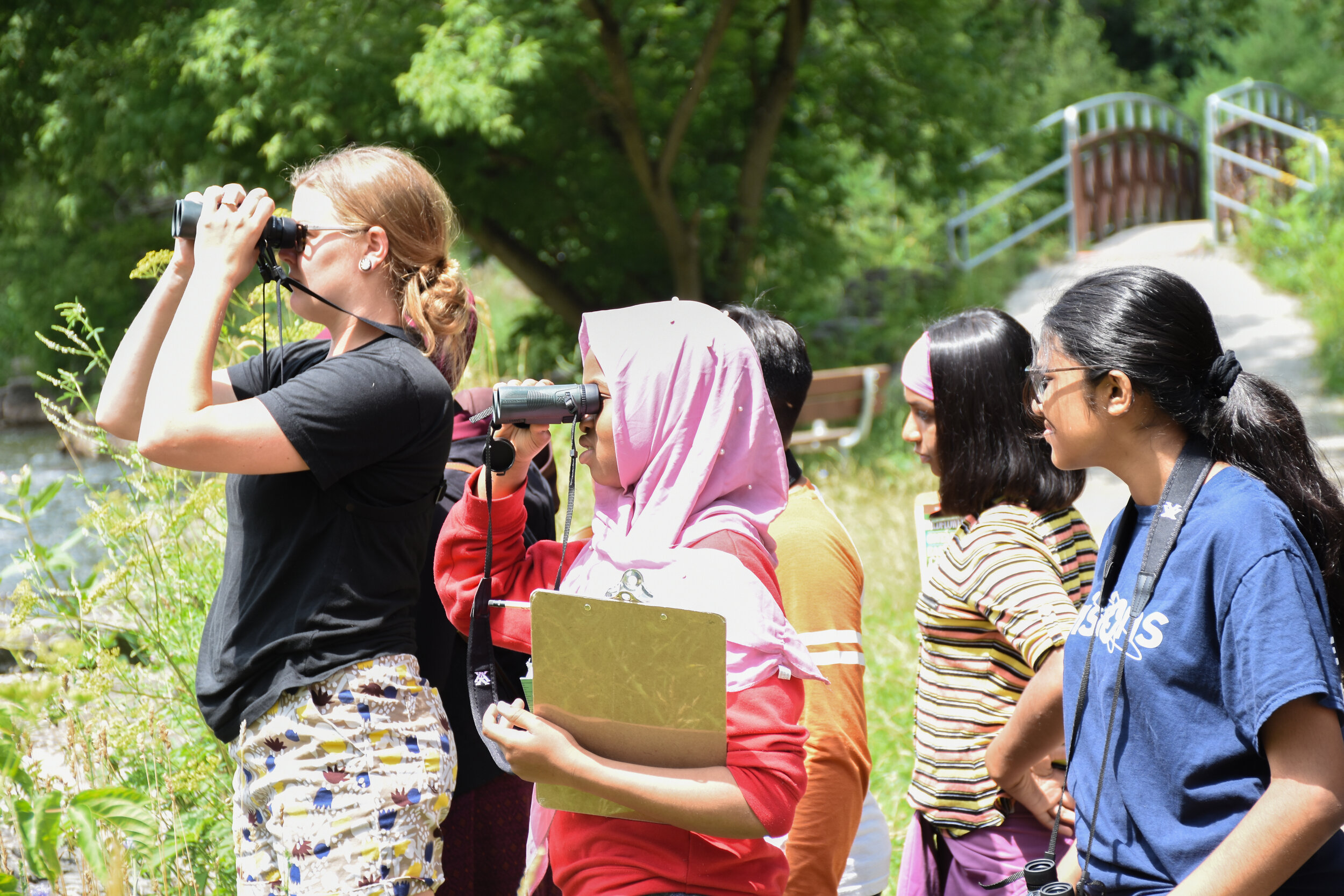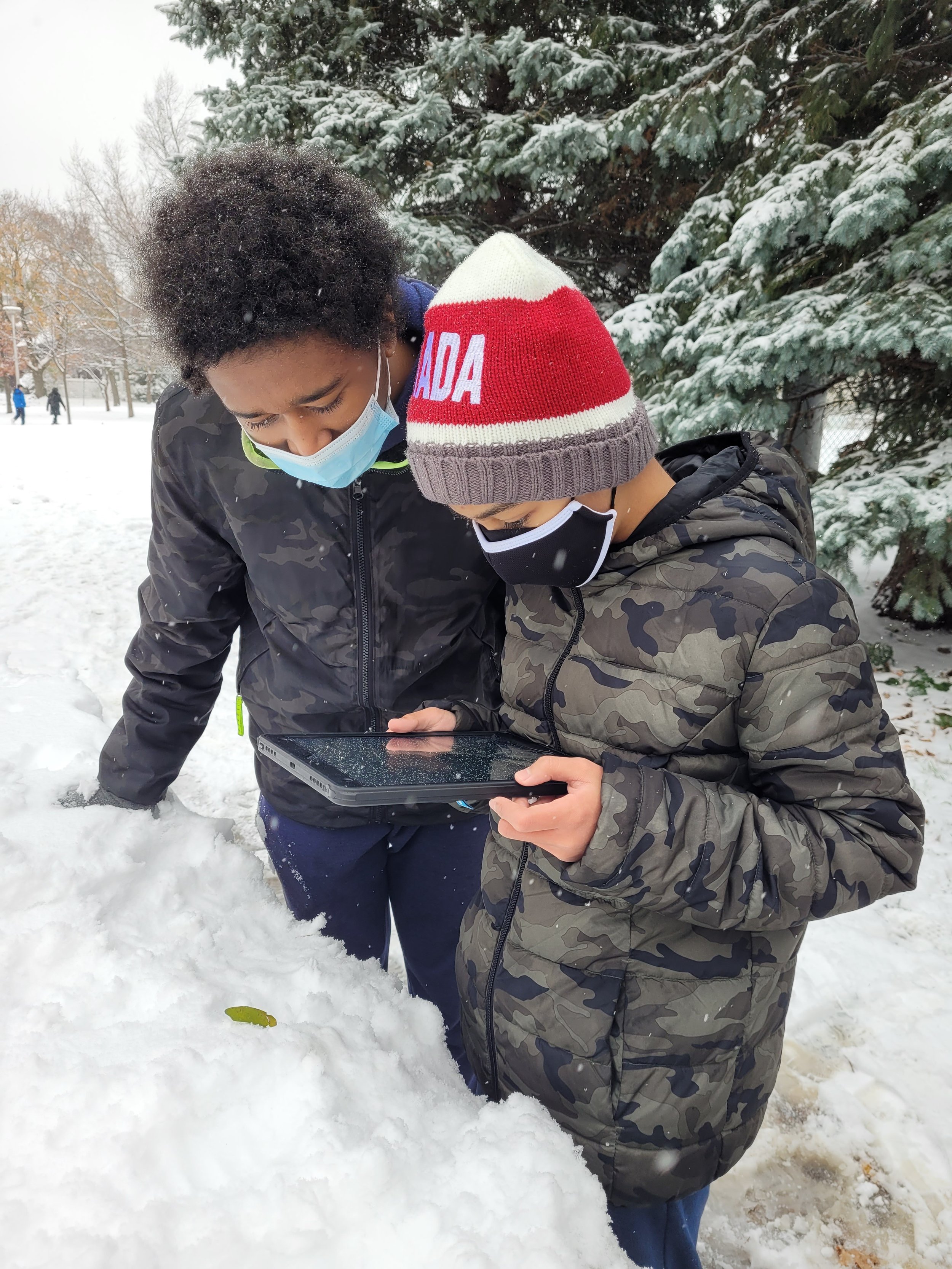

SkNOWLEDGE
in partnership with EcoSpark
Conduct a citizen science survey at your school by measuring the snow and making a snow ball!
WhAt’s SkNOWLEDGE?
Join the Snow Knowledge Collective, also known as the SkNOWLEDGE Collective, along with EcoSpark and become a vital part of this citizen science initiative! Dive into the fascinating world of snow, exploring its impact on the environment and its crucial role in water resources within our communities. Through collaborative efforts, inquiry, and digital mapping, we can unravel the mysteries of snow together.
WhAt’s Involved?
As a volunteer, you'll embark on outdoor field-based activities right in your school yard, local park, or greenspace, utilizing simple tools like a ruler and thermometer and engaging in hands-on techniques such as making snowballs. You’ll record your observations on a simple data sheet and then submit them to sknowledge.ca. You can then see your data live and use interactive mapping tools to delve into the nuances of seasonal snow variability and the localized effects of climate change.
Why focus on Snow?
Snow presents a unique challenge in monitoring due to its susceptibility to wind, sunlight, topography, freeze-thaw cycles, vegetation, and even wet precipitation events like rain. Taking location-specific measurements is crucial to understanding the effects of climate change locally.
volunteer Today!
EcoSpark and SkNOWLEDGE need people like you to help us with this important project.
Your participation in this project will not only enhance your data literacy but also empower you to launch your own scientific investigations, all while enjoying the great outdoors. The data you contribute to the SkNOWLEDGE Collective will play a crucial role in assessing satellite-derived snow indices, expanding meteorological monitoring networks, and providing valuable insights into broader climate, meteorological, and hydrological processes.
You can start measuring today! Keep reading to find out how.
Students recording their meteorological observations.
Interested in participating as a class?
We have free SkNOWLEDGE kits available, as supplies last.
Interested teachers, please contact Dana Buchbinder at dana@ecospark.ca.
How to participate
1. READ THE QUICK-START GUIDE
Read the step-by-step instructions that outline the data collection protocol, along with the backgrounder. Visit the SkNOWLEDGE Collective resources page for lesson plans and other supplementary materials.
2. gAther Materials
All you need are a few items you might already have at home!
Meter stick or ruler
Thermometer
Computer/tablet/smartphone
3. Collect Measurements and Record Observations
Find a place outside in a field or lawn that is untouched (e.g. an area that hasn’t been walked on, plowed, or driven over) and away from structures (e.g. fences and buildings). Record 10 sets of observations at different locations across the field. You can record your observations on these data collection worksheets then follow the prompts in the online survey to share your SkNOWLEDGE!
SkNOWLEDGE Collective was founded by Larissa Pizzolato, M.Sc PhD Candidate at University of Toronto. This school-based citizen science initiative is designed to spark inquiry, collaboration, and discussion about snow in the environment and its significance for water resources in our communities.
All information on this page has been reproduced with permission from www.sknowledge.ca.
Pizzolato, LAV & Snow Knowledge Collective. (2023). Snow Knowledge Collective,
SkNOWLEDGE, Educator Resources. sknowledge.ca/resources.










